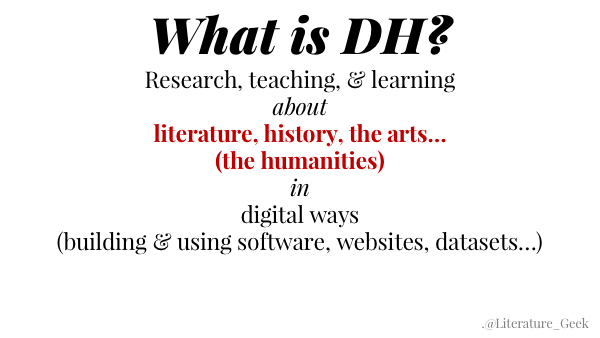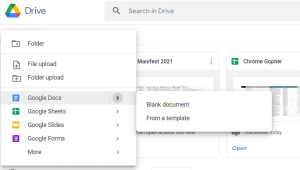Thanks to the Communications Team, the FCS branded Google Drive templates have been updated.
Gather.Town
Blended teaching? Want to more fully integrate those at home?
Gather.town. You got to try it. It is like Zoom and Google Meet but has the added component of a the virtual “room” attendees are occupying. These participants have the ability to move around and interact with other participants based on your locations in the room, just like real life.
I LOVE this tool.
It may seem “cheesy” at first glance, but if you want to put kids in breakout rooms and have a more authentic feeling virtual classroom, I hands down prefer Gather.town to Meet or Zoom.
Here’s how two of our colleagues use the tool.
Digital Humanities
 I have come across two amazing examples of digital humanities in which traditional content, in particular Hamlet and the Canterbury Tales -can’t get more traditional than that- is shared via fundamentally new interfaces. The way this content is styled allows for the viewer and reader to interact with these classics in almost startling new ways.
I have come across two amazing examples of digital humanities in which traditional content, in particular Hamlet and the Canterbury Tales -can’t get more traditional than that- is shared via fundamentally new interfaces. The way this content is styled allows for the viewer and reader to interact with these classics in almost startling new ways.
The Canterbury Tales and tech? Chaucer’s 14th Century classic ? Yep, there’s now an app for it. And it’s amazing. Plus, it is a great example of how embedding print within multimedia can enhance understanding.
VR is another medium that shows great promise. Thus far, it seems that the military and gaming industry are using it more than anyone else. Artists, scholars and writers really haven’t figured out what to do with it yet.
Last year pre-pandemic, I looked at a lot of VR so I could filter the junk and share the good stuff with all of you. To be honest, much of it wasn’t very good. So, I was thrilled to come across this 360 performance of Hamlet. When you return to campus next week, grab a Google Cardboard headset or get an even better VR headset from the tech suites to watch it. You haven’t really seen anything like this before- At least I hadn’t.
(Watch the video below on an iPad or smartphone to get some sense of the 360. This won’t work on a regular Chromebook or laptop).
Here’s what the NYT had to say about it.
Both of these are stunning. Check them out! I urge us to think more about teaching kids how to begin to do things like this. It will be sloppy and messy. For instance, how do we grade such work? It takes us far out of our comfort level and areas of expertise.
But wouldn’t it be fun?
Padlet into Canvas
Padlet is an easy to use bulletin board page that can be used by students and teachers to post notes on a common page. One can configure a Padlet in many different ways. Once created, the notes posted to Padlet by teachers and students can contain links, videos, images and document files.
Here’s a Padlet Wall of tech resources. You can see what a Padlet Wall looks like and perhaps learn an additional tech tip.
Interactive Tools for Teaching
Teaching is hard. I mess up every day. Teaching is a complex, multifaceted, and dynamic. New ideas, new best practices, new tools, and new strategies are coming at us all the time. On top of that, there’s the challenge of the pandemic which has compelled us to change.
Trying to keep up is like drinking from a fire hydrant. There’s so much that it is hard to swallow anything.
With this in mind, we’ve been hesitant to share too much more in the way of tech with teachers this year. We get it.
I am prompted to write in spite of this because I’ve come across two tools that have made my online and blended teaching more productive, Gathertown and Perusall.
Introducing Prezi Video
Remember Prezi? Once upon a time it was all rage for students. I see very few students use this tool any longer. Prezi is back, though, with a new feature called Prezi Video which I’ll happily add to my toolkit.
Prezi Video allows presenters to combine the animation features of a Prezi presentation with a talking-head video. The presenter stays on the screen, talking the whole time, while the animated presentation is layered right on top of that video. As a teacher, within that side presentation, you can share a screen, show a video, provide text or images or anything else you would do with a shared screen presentation.
After nearly a year of creating videos for hybrid and remote learning, I appreciate that this offers something fresh.
To learn more or make your own, go to https://prezi.com/video/

